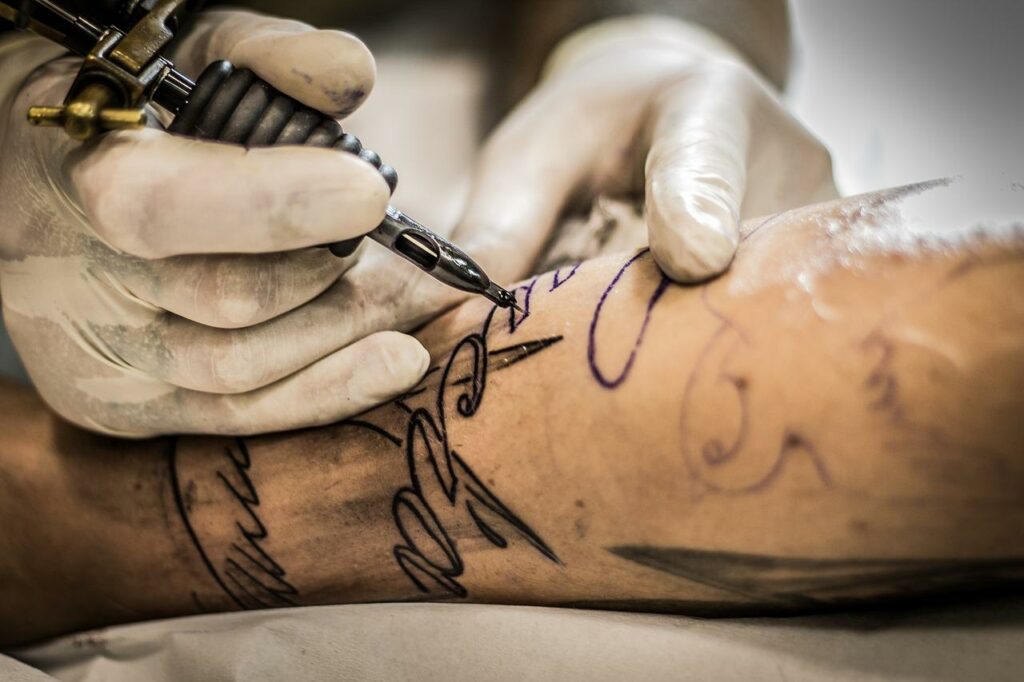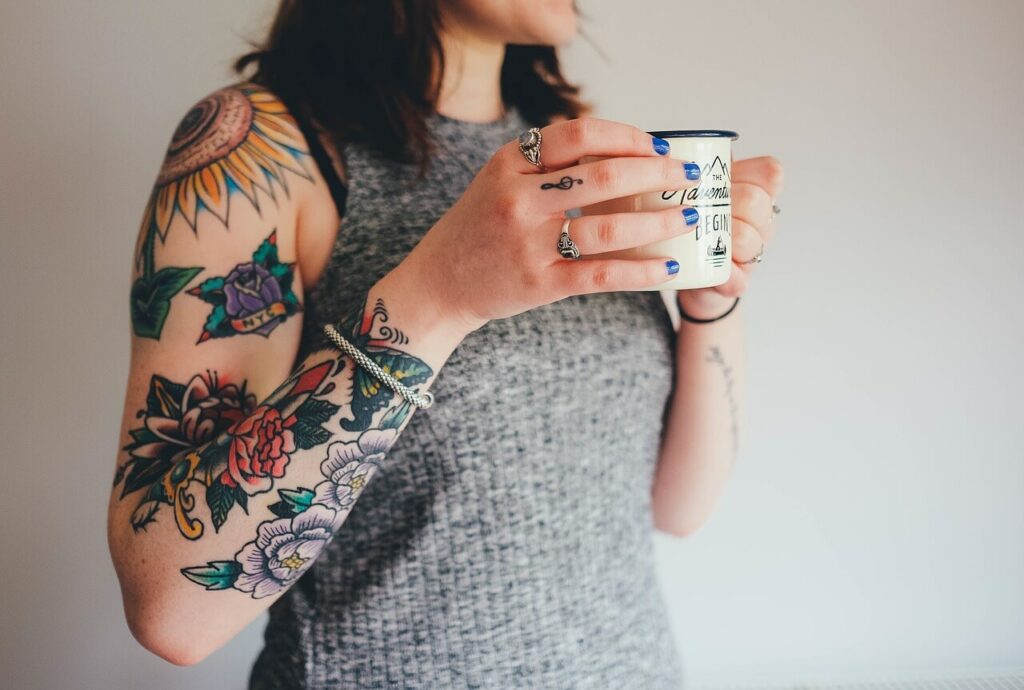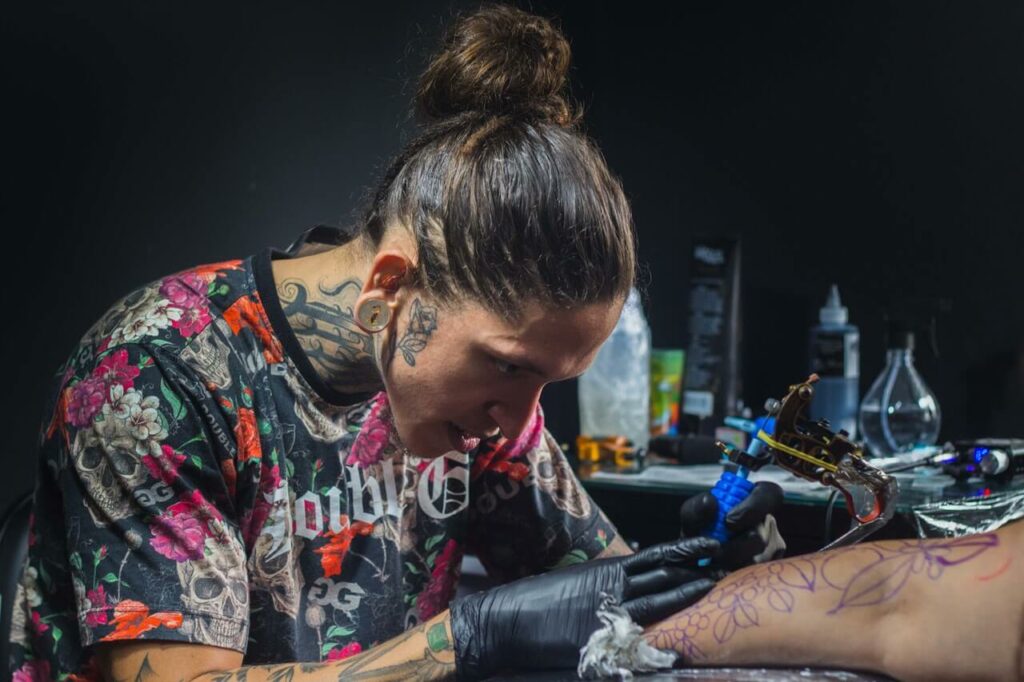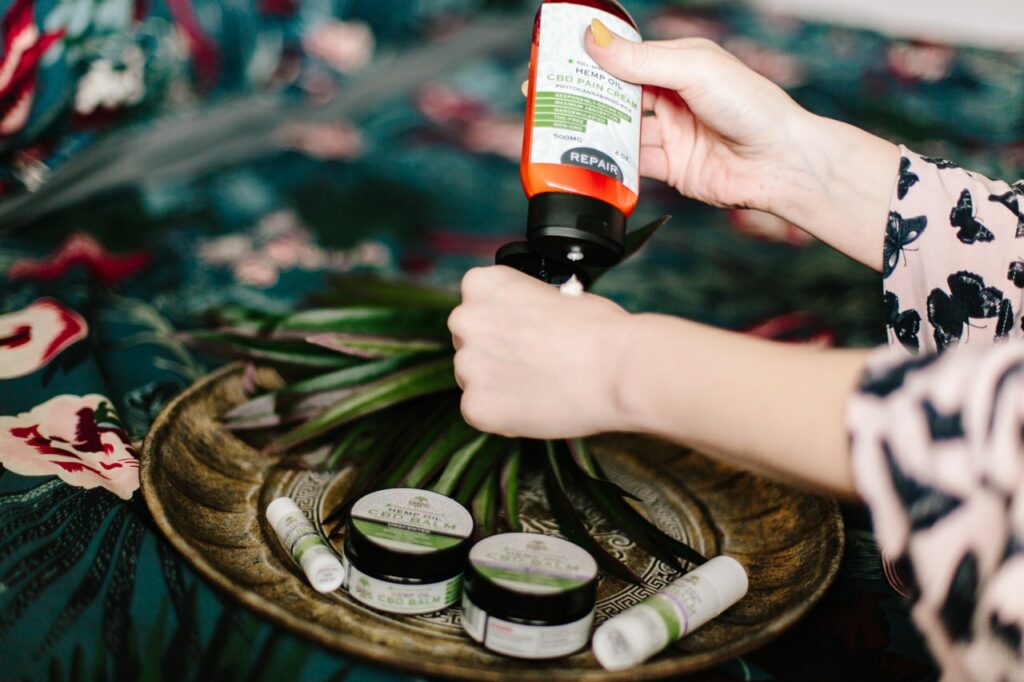If you’ve ever gotten a tattoo before, you know that the procedure does not stop when the artist completes the final line of your new, beautiful artwork. The next difficult step is healing your tattoo. This article on ‘how to reduce tattoo swelling’ will offer you healthy, beautiful ink that does not alter the color or quality of your new body art.
There are natural solutions to cure your tattoo that do not use harsh chemicals or thick, strongly scented body butter, ranging from basic treatments to handmade concoctions.
Keep reading to find out more.
How to Reduce Tattoo Swelling

Your tattoo artist will begin your aftercare program as soon as they have completed their job. It is, after all, their masterwork, and they want to maintain its magnificence. They will likely cover your tattoo with petroleum-based ointment and a bandage.
Resist the temptation to admire your new acquisition or touch it with your fingertips. A tattoo is essentially an open wound, so keeping it wrapped and away from your hands will prevent germs from entering the skin.
In addition, based on where the tattoo is located on the body, covering it will minimize pain and irritation from clothing rubbing against it.
What is the most common error made with fresh tattoos? Dr. Michele Green, a New York-based cosmetic physician, warns against not wearing sunscreen and exposing a tattoo to sunshine.
Observe the following home remedies to help you reduce tattoo swelling:
Home Remedies

1. Do adhere to your tattoo artist’s guidelines. Allow several hours for your tattoo to absorb blood, fluid, or extra ink that may seep out. (This is quite common.)
2. Keep in mind that a tattoo is an open wound. When it is time to remove the bandage, handle your tattoo like any other injury. Before handling your tattoo, wash your hands with soap and water and clean the damaged area with care.
3. Cover up when exposed to the sun. Then, liberally apply SPF since tattooed skin is susceptible to UV radiation and premature aging. Choose sun-protective, loose-fitting clothes while your tattoo heals.
4. Keep the tattoo moist, but allow it to breathe. Then, apply a thin coating of ointment or another authorized treatment to the whole tattoo. If clothes do not cover your tattoo, keep it exposed to allow your skin to air and promote healing.
5. Consult your tattoo artist or physician if you have any unusual irritation, swelling, other infection, or allergic reaction symptoms.
6. Avoid sunscreen until your tattoo has completely healed since the minerals or chemicals may aggravate your damaged skin.
8. Until your tattoo has fully healed, refrain from swimming, soaking in a hot tub, or taking a bath. Instead, go for a shower. If you can maintain your new tattoo out of the water, you may soak or swim.
9. Avoid inflammation by patting your skin dry instead of rubbing it.
10. Do not pick at, scratch, or massage your tattoo until it has completely healed. You might leave scars.
Tattoo Healing Stages

The tattoo healing stages are separated into four phases, requiring slightly different tattoo care.
1 Week
The first phase lasts around six days. You may experience redness, seeping, minor swelling, or a burning sensation while your body responds to the injury. Your new tattoo is wrapped for the first several hours, and then it’s treated as an open wound.
2 Weeks
You may suffer itching and flaking at this time. The ink will stay intact, even if it seems that a portion of it is flaking off since flaky skin is a normal reaction.
Try to refrain from scratching or poking at scabs. A tattoo artist or physician suggests a moisturizer helps keep the skin surrounding the tattoo moisturized and reduces irritation.
3-4 Weeks
Your tattoo may seem less bright than anticipated due to a layer of dry skin. The tattoo may start to dry, and the itching should subside. If it does not, and the redness lingers, it may be an early indicator of a tattoo infection.
It will exfoliate naturally, exposing the vibrant tattoo. Refrain from picking or scratching, which might cause scars.
2-6 Months
At this time, redness and itching should have reduced, and your tattoo will seem entirely healed. However, it is prudent to maintain aftercare. Wearing sun-protective clothes, staying hydrated, and maintaining the tattoo clean are all aspects of long-term tattoo care.
How to Have the Best Aftercare

It is crucial to use a protective ointment that contains no irritant compounds. Applying an ointment after a tattoo enables the scab to heal and creates an emollient layer to facilitate this process.
By now, you know that painful, constricting sensation when a scab dries? The ointment offers a protective layer that somewhat slows healing. It might indicate that your skin pulls together while it heals, which is undesirable when you have a beautiful tattoo.
If a crust dries up, it heals rapidly but not quite as effectively as if you apply a healing cream and make sure it stays covered. Using the appropriate product may make all the difference, allowing for greater healing; quicker is not better in this situation.
Skincare Products

1. Petroleum-Based Ointments
A&D ointment is a popular and cheap option for tattoo aftercare. These ultra-hydrating, thicker products are most effective during the first several days.
Utilize a thin coating of these products to allow your skin to continue to breathe and recover.
This salve is also known as Bepanthen.
Aquaphor Advanced Healing Ointment is another anti-inflammatory and moisturizing choice.
Petroleum jelly (commonly known as Vaseline) also works nicely. Additionally, Cerave Healing Ointment helps preserve and moisturize freshly applied ink.
2. Soaps
- Use a mild, fragrance-free soap.
- Consider Dial, Dove, and Neutrogena.
- Babies’ products are often fragrance-free and mild, making them excellent options.
3. Moisturizers
As your tattoo begins to recover and the scabs come off, moisturize as necessary.
Creams and baby lotions are effective for tattoos, but always go for fragrance-free formulations!
Examples of these readily accessible creams and lotions are:
- Lubriderm
- Curel
- Eucerin
- Aveeno
Frequently Asked Questions
Can Ice Be Used on a Swollen Tattoo?
Applying ice to your tattoo is a great technique to accelerate the healing process. A bag of ice applied to a swollen tattooed region may work wonders. It must be wrapped in a clean towel and applied to the skin for thirty minutes.
After thirty minutes, use a warm towel to restore normal blood flow.
Is Tattoo Swelling Normal?
It’s common to experience redness and swelling after receiving a tattoo. You may see visible fluid pouring from your fresh tattoo. Scabs may develop. Your skin may itch and peel as it heals.
How Long Does It Take for a Tattoo to Stop Swelling?
Following a tattoo, the external layer of skin normally heals within two to three weeks. While it may seem and feel healed, and you’d be tempted to stop aftercare, it may take up to six months for the skin underneath a tattoo to heal completely.
Is Aloe Vera Beneficial to Tattoos?
Aloe vera is commonly suggested as a tattoo scar therapy. When applied to them, it may minimize the severity of scars and the risk of infection and additional skin damage. During the healing phase, problems might occur, causing scarring.
Is Coconut Oil Beneficial for Tattoo Aftercare?
It is completely safe for use on fresh tattoos and gives the skin a variety of healing and regenerative characteristics. The oil is entirely natural and works with the skin to increase collagen levels, defend against germs and infection, and maintain suppleness.
Should I Cover My Tattoo Before Bed?
Most tattoo artists advise that you sleep with your tattoo covered for the first several nights (3-4). Use only a high-quality tattoo-specific bandage that is breathable, antimicrobial, and waterproof. It protects the wound from germs, your bedding, and unintentional picking or tearing of the scabs.
Do Tattoos Increase Your Attractiveness?
According to research, two-thirds of women are attracted to men who have tattoos. According to a study conducted by the dating app Type, 64% of women who indicated a preference were interested in dating men with permanent tattoos.
How Long Do Tattoos Typically Last?
Whether there were complications during the recovery process, you will be able to know within two weeks if a tattoo has to be touched up. If there are no concerns, It is estimated that a tattoo may last ten years before needing to be reapplied. As you become older, so does your ink.
Wrap Up
As long as you follow the instructions in this article on how to reduce swelling, your tattoo will heal and be ready to show your friends boasting. Inattention to your tattoo might result in scabbing or scars.
And if you are afraid that dry healing will not be effective for you, feel free to apply a safe,
chemical-free moisturizer to avoid any interactions with the tattoo ink or your skin.
If you’re uncertain, rely on your tattoo artist. They are professional; thus, they will know which approach may work best for your skin.



